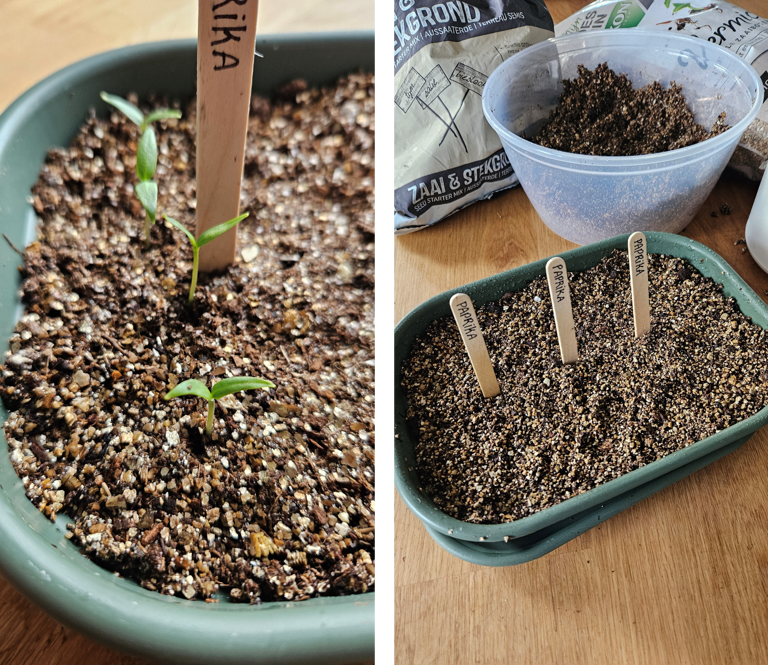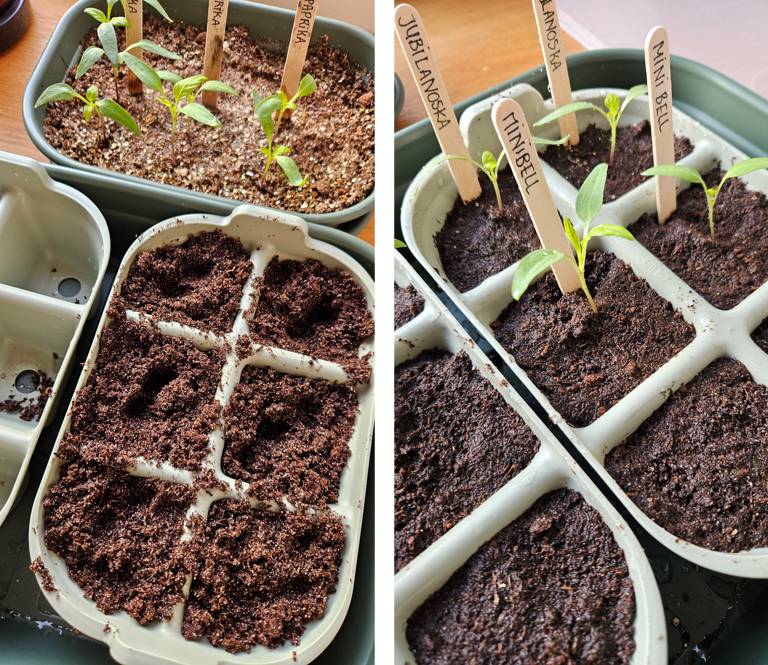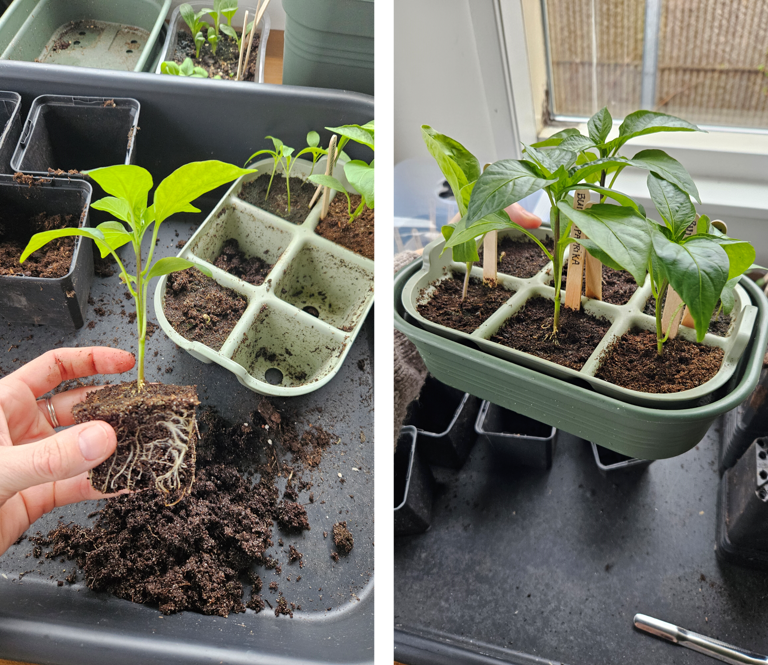
Starting with pre-sowing
Why pre-sow?
In March, April, and May, you can pre-sow various vegetable garden crops indoors, but why do you do this? It's mainly because it accelerates the growth cycle of these crops and gives you a head start when you plant them outdoors in the soil from mid-May. It also allows you to extend the growing season, especially if you live in an area with a short growing season or unpredictable weather like in the Netherlands, Belgium and Germany.

What's the best way to pre-sow?
There are several methods for pre-sowing indoors. You can use all kinds of containers imaginable, ultimately filled with the right sowing soil. What I personally find helpful is a sturdy sowing tray with a drip tray underneath and a grow house on top. This creates an ideal germination and growth environment for young seedlings (plants that have just germinated from a seed) that are still very fragile and sensitive to temperature fluctuations. A sowing tray with compartments can be particularly useful if you want to sow multiple types of crops in one tray and want to ensure that the seeds don't mix. Don't forget to place name tags after sowing; this prevents mixing up your crops.

What is the right soil for pre-sowing?
For indoor sowing of selected crops that require it, it's best to use sowing or cutting soil. This is a special type of potting soil formulated for good seed germination, allowing roots to find their way easily and move freely. This is mainly because it's very loose soil with balanced nutrition. I always put the sowing soil in a large bucket and add water. I mix it with my hands so that the soil is well-bound, preventing it from washing away from where you sowed it later when watering. This ensures that they actually germinate where you sowed them.
Watering after pre-sowing
Once you've sown the first seeds in the pre-moistened sowing soil, it's crucial to ensure that the soil remains moist enough. Not soaking wet, as this can lead to mold or a green haze, but wet enough for the seeds to germinate well. You can maintain this moist soil best by covering the sowing tray you used with a grow house and keeping its vents closed. During the germination period, leave the sowing tray alone and refrain from watering. Once the first seedlings emerge above the ground, open the vents. With air circulation, water will evaporate more quickly now. Keep an eye on the sowing soil from now on and keep it moist by filling the drip tray at the bottom with water.
Right spot
Place the sowing tray in a bright and warm spot, preferably in a location where the temperature doesn't fluctuate too much. Warmth is particularly needed during seed germination. Once the seedlings have emerged, direct sunlight becomes more important for growth.

Transplanting seedlings to new pots
Once the plants you pre-sowed indoors in sowing or cutting soil have grown 4 leaves, they are large enough to transplant (moving a seedling to its own pot). Take a separate pot for each plant. Fill it with potting soil and place the seedling in it. Always do this very carefully so that the leaves, roots, and stem are not damaged. You can use a teaspoon for this, for example. The elho seed tray is very useful for this because it has a hole at the bottom of each compartment. This allows you to easily and gently remove the seedling.
Which plants are best to pre-sow indoors?
I always pre-sow the following crops in March, April, and May:
- Tomatoes (March)
- Bell peppers (Feb-March)
- Chili peppers (Feb-March)
- Eggplant (Feb-March)
- Cucumbers (March-April)
- Zucchini (April)
- Pumpkin (April-May)
- Various herbs such as basil, cilantro, and parsley (March-April)